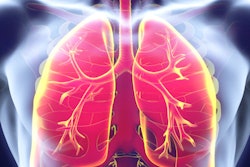
As awareness of CT lung cancer screening programs continues to grow, improving the quality of relevant online information is an imperative next step, according to radiologists from Massachusetts. They uncovered major gaps in patient information in an evaluation of websites run by current screening programs.
The U.S. Centers for Medicare and Medicaid Services (CMS) mandates shared decision-making as part of CT lung screening, yet early reports have indicated that physicians may not adequately be informing patients due to limited knowledge and insufficient time, according to research presented at RSNA 2019.
A recent study of actual patient visits found that not a single one met basic skill criteria for explaining the pros and cons of CT lung screening, with an average consultation time of only 59 seconds. Inadequate patient-physician discussions, along with a growing reliance on internet sources for medical information, has made it more important that screening programs maintain useful websites, presenter Dr. Brent Little of Massachusetts General Hospital told session attendees.
To assess the quality of existing online content, Little and eight other radiologists individually examined the patient information content available at websites run by 257 unique U.S. CT lung screening programs. They reviewed the text, images, videos, and PDF attachments provided at the websites using a standardized content checklist developed based on recent literature.
Collectively, the radiologists' evaluations revealed that nearly all of the websites (98%) mentioned the existence of eligibility criteria for CT lung screening. Most specified that individuals could only participate in screening if they had a smoking history of more than 30 pack years (94%) and were either active smokers or quit less than 15 years ago (90%).
However, less than half (47%) of the websites explained that individuals had to lack signs and symptoms of lung cancer in order to be eligible, and only 7% indicated that the individuals needed to be able to undergo treatment if lung cancer was present. The websites also referenced a wide range of age restrictions for screening eligibility, with 47% listing 55 to 77 years as the appropriate age range, 16% listing 55 to 80 years, and 14% listing 55 to 74 years.
In addition, about half of the sites contained content on smoking cessation, but only 37% offered a functional link or telephone number for more information. Even fewer websites presented the possibility of meeting with lung cancer screening staff (25%), getting a nodule clinic referral (23%), and receiving other tests (22%).
Roughly half of the websites also touched on the topic of Medicare and private insurance coverage, but a mere 4% explained that screening for eligible individuals was free. One-fifth of the sites actually stated that screening was not entirely covered.
In general, most of the websites made sure to mention some of the benefits of CT lung screening but failed to mention potential risks more often than not. Whereas nearly all the websites explained that lung cancer screening relied on low-dose CT and could help with early cancer detection, only about 45% mentioned any risks at all.
What's more, only a select few websites provided links to U.S. national sites (e.g., cancer.org, acr.org, cms.gov), which could have been a simple way to deliver more comprehensive information to patients, Little noted. And only 1.6% of the sites met the sixth-grade reading level for patient information recommended by the American Medical Association.
Little subsequently showed examples of misguided information the researchers came across while evaluating the websites.
One website stated that CT lung screening allowed for only two annual screens following the initial exam. A separate site suggested that eligible individuals with a normal screening exam may wish to obtain a repeat study in one year, and that a radiologist may or may not ask the individual to return after detecting a suspicious pulmonary nodule. Several sites -- most of them updated as recently as November 2019 -- also inaccurately claimed that CMS and most private insurers have so far declined to provide coverage.
"There's a lot of inconsistency and incompleteness of information provided to patients about lung cancer screening," Little said. "The majority of sites failed to address the potential risks and costs, and some have blatantly incorrect information. Knowledge of these deficiencies should prompt and guide quality improvement efforts."



















